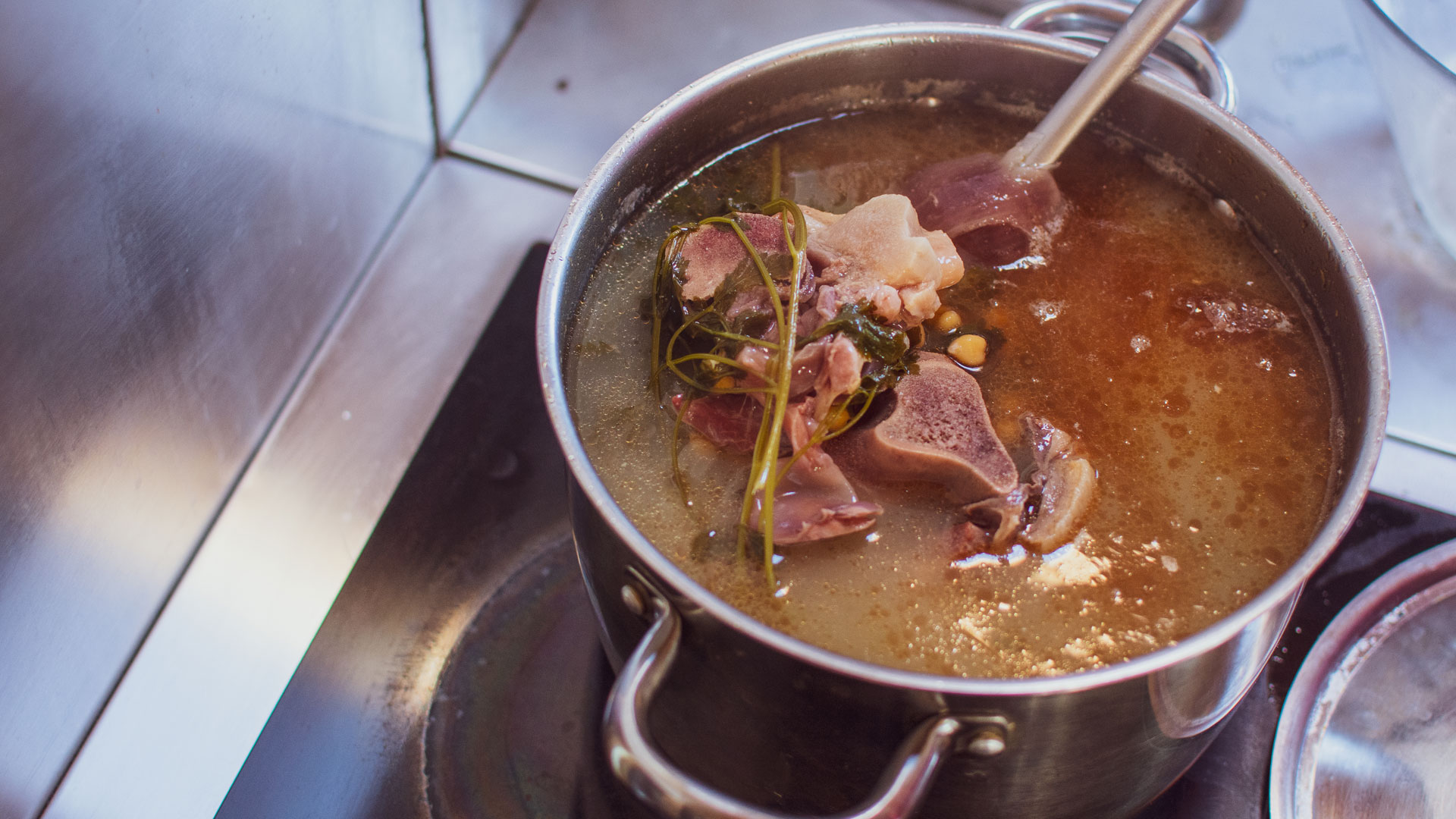
I got my rescue lurcher, Dixie, almost six months ago and, like all new pawrents, immediately set out on a crusade to get her as healthy as I possibly could. She wasn’t in bad condition but had struggled to keep weight on in the past and her spine and ribs were quite prominent (not unusual for a sighthound, as they tend to be lean).
Dixie has a combination of wet dog food and dry dog food, twice a day in a 50/50 split. She is terrible for not drinking much water, which always worries me, so I was soaking her kibble in water before giving it to her, to improve her hydration levels.
After seeing some quite elaborate raw feeding on social media (one dog gets hibiscus tea), I decided that I wanted to enhance her meals to make them more vitamin and mineral-rich. So, I trotted off to the village butcher’s to see if they’d give me any bones to make a broth with.
They gave me several kilos of bones for free and I ended up freezing most of them, starting out with just a few chicken bones and feet in some water simmered overnight. I then soaked her kibble in the bone broth rather than water before giving it to her.
What is bone broth?
“It is the same thing it is in human food. Bones and slowly cooked down to make a liquid stock which is highly palatable and rich in healthy fats and collagen,” says
Sarah McNamara, pet nutritionist for Barking Heads. “These nutrients can in fold support healthy skin and good coat condition in pets as well as an array of other health benefits.”
I do add frozen carrots, peas, and sometimes a lamb tendon to my bones while they’re boiling, so it’s not strictly “bone broth” in the purest sense. Sometimes I use chicken bones or beef bones (after a roast or from the butchers) or I’ll buy a marrow bone (some butchers will give you these for free). I make my bone broth in a crock pot, leaving it for 12+ hours, usually overnight, to simmer and extract all the goodness. I then strain it through a sieve (particularly important when using chicken bones) to remove any solids (or tiny bones) and keep the liquid in the fridge to pour over Dixie’s food. I sometimes save water left over from boiling vegetables and cook the bones in that to capture any water-soluble vitamins that have leeched into the liquid that would otherwise be poured down the drain.
Get the best advice, tips and top tech for your beloved Pets
Emma Lee, Nutritionist at Burns Pet Nutrition added: “You could add anything to it really, as long as it is safe for dogs, but typically a broth is liquid and so does not contain chunks of vegetables for example. It would be more of a stew then.”
Contributing experts

What are the benefits of bone broth for dogs?
“It is nutrient dense and on top of providing skin and coat support and aiding palatability, it is also rich in protein and minerals. It is easily digestible and therefore has benefits such as liver detoxification, digestive system support, joint support, fighting inflammation, and boosting the immune system,” says McNamara.
Benefits I’ve personally seen since adding homemade bone broth to Dixie’s diet include:
- Improved coat condition, although I can’t definitively say these results are due to the bone broth and not something else.
- Dixie is quite a picky eater and I found it difficult to get her to finish her meals, but with the bone broth poured over her kibble I found that she was in the “clean bowl club” almost every day.
- She has also put on 0.3kg/ 300g of weight since I started adding the bone broth and this may be because she now eats a bit more, or it may be due to a general increase in condition because she’s getting more exercise with me than she used to have.
“There can be benefits, bone broth can contain substantial quantities of collagen, glucosamine, glycine, potassium, magnesium, and other essential nutrients. It can be a really good way to get more fluids into your dog, particularly for sports or working dogs,” says Lee. “While bone broth is generally safe, adverse reactions can still occur. Bone broths should never be used as a substitute for a complete and balanced diet and if the dog has been diagnosed with a health issue, it is important to discuss it with your vet first.”
Looking for more like this? Read what should dogs drink

Sarah McNamara has been a nutritionist for five years and started her journey in pet nutrition thanks to her love of all animals and her passion for providing them with the correct nutrition for their individual needs and lifestyle - but also to fit the needs of the pet owner in terms of format and price point. Before branching out into nutrition, Sarah worked for an equine feed company and held positions in Livestock Animal feed manufacturing in quality control and within a laboratory setting analyzing feed and raw materials on a wet chemistry basis.

Emma Lee recently joined Burns as a Nutritional Advisor and has worked with a local behaviorist for eight years as a dog trainer where she regularly gives dietary advice to puppy and dog owners. She is also a qualified Canine Massage Therapist, working with dogs from all walks of life, including Agility dogs, Flyball dogs, Obedience Dogs and pet dogs. She currently has four rescue dogs and has fostered dogs for the past four years.
Lou is an experienced writer and keen dog lover who works at PetRadar's sister site, LiveScience. When Lou isn't covering health and fitness, she's busy spending time with her family dogs or growing all kinds of veggies and flowers on her allotment.
